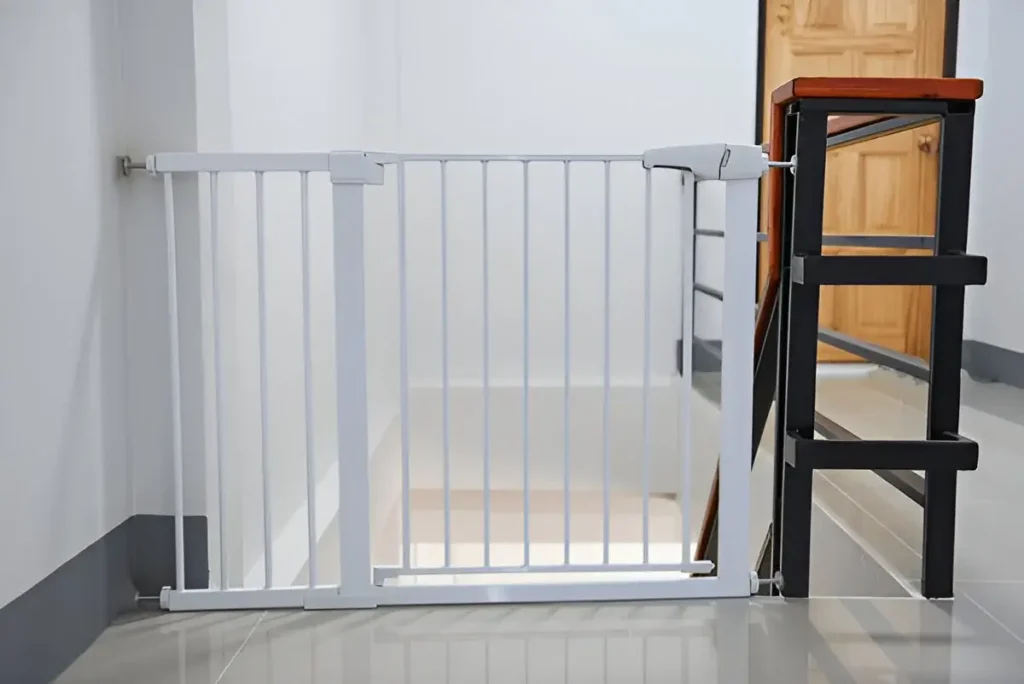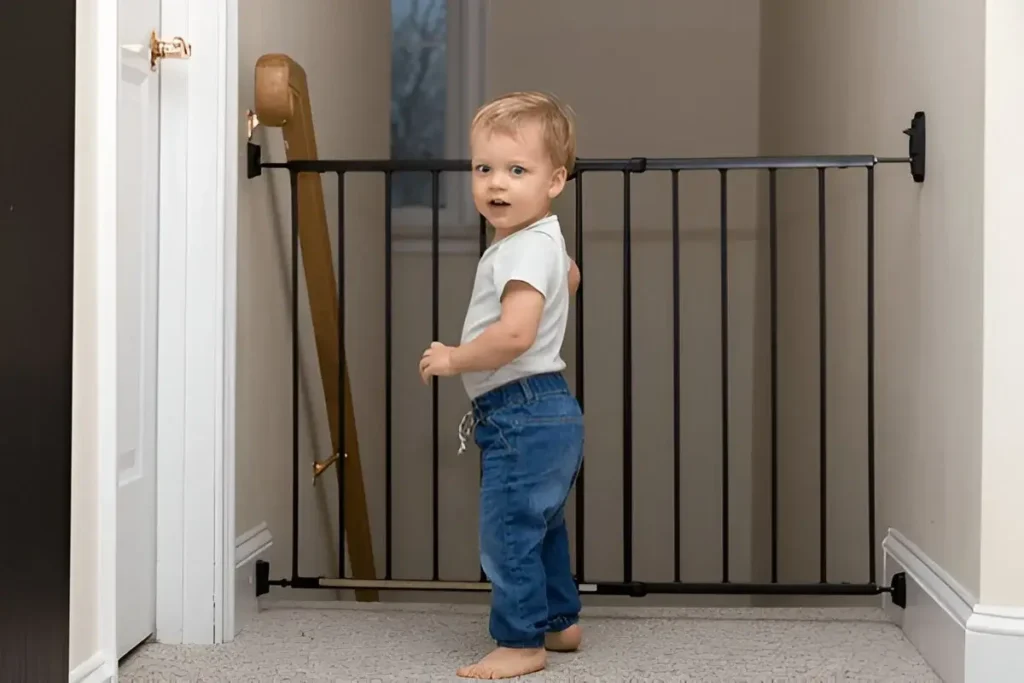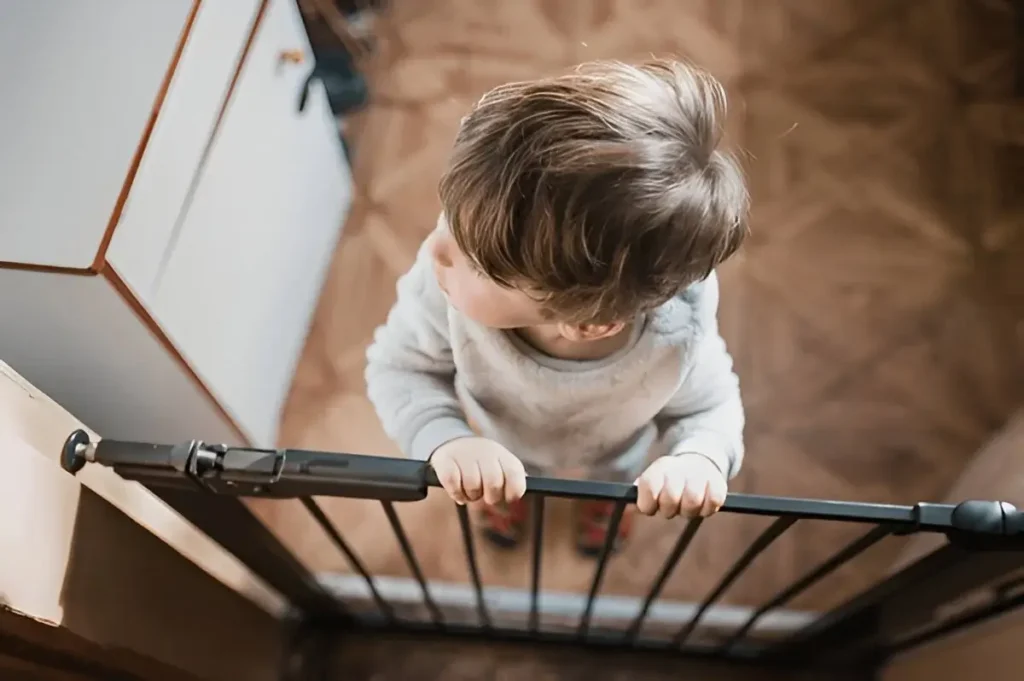How to Keep a Child Safe on Stairs
keeping your child safe on stairs is a top priority. The American Academy of Pediatrics says stair injuries are common in kids. I always worry about my child’s safety, like when they’re on stairs. It’s important to know how to keep them safe.
Stairs can be dangerous for kids, with steep steps and slippery surfaces. In this article, I’ll share key tips to keep your child safe on stairs. We’ll look at the risks and how to prevent accidents.
Table of Contents
Introduction to Stair Safety
protecting your child is a big responsibility. Learning about stair safety is a big step in that. By knowing the risks and taking steps to avoid them, you can keep your child safe.
Key Takeaways
- Stair-related injuries are a leading cause of injury to children.
- Understanding child stair safety is crucial to preventing accidents.
- Implementing safety measures, such as proper lighting and maintenance, can help keep your child safe on stairs.
- Learning how to keep a child safe on stairs is an important step in protecting your child’s health and well-being.
- By taking the time to understand stair-related risks and taking steps to mitigate them, you can help create a safe environment for your child.
- Child stair safety is an important aspect of overall child safety and should not be overlooked.

Understanding Stair-Related Risks for Children
it’s crucial to know the dangers stairs can pose to kids. Stair accidents can be very serious. To keep kids safe, make sure stairs are well-lit and free from clutter.
Falls are the top cause of stair accidents, followed by getting trapped or tangled. Toddlers and young kids are more at risk because they’re still learning to balance. Knowing these risks helps parents make their homes safer for their children.
Common Causes of Stair Accidents
- Falls: The most common cause of stair accidents, often resulting from slipping, tripping, or losing balance.
- Entrapment: Getting trapped between the stairs and a wall or other object, which can lead to serious injury.
- Entanglement: Getting caught in clothing or other items that can cause a child to trip or fall.
Age-Specific Risk Factors
Children under five are more likely to get hurt on stairs because they’re curious and still learning to balance. As kids get older, the risk goes down. But it’s still important to teach them how to stay safe on stairs.
Statistics on Stair-Related Injuries
Every year, thousands of kids get hurt on stairs, and many of these accidents could be prevented. By understanding the risks and following safety tips, parents can greatly reduce the chance of injury to their children.
Assessing Your Home’s Stair Safety Needs
it’s vital to check your home’s stairs for safety. The American Academy of Pediatrics suggests looking for loose railings and slippery surfaces. These can be dangers for your child.
Keeping your stairs in good shape is key. Make sure the railings are tight and the stairs are clear of clutter. Also, check if the stairs are slippery or have uneven steps.
- Check for loose railings and banisters
- Inspect the stairs for slippery surfaces or uneven steps
- Ensure that the stairs are well-lit and free from clutter
- Consider installing non-slip treatments or visual safety markers to enhance stair safety
By checking your stairs regularly, you can avoid accidents. This makes your home a safer place for your child to grow. Always keep your stairs safe and secure for your child’s well-being.
How to Keep a Child Safe on Stairs: Essential Safety Measures
To keep a child safe on stairs, several safety steps are needed. Installing a stair gate at the top and bottom can stop falls. Also, a child proof stairs railing adds extra protection.
Keeping stairs safe involves a few important steps. These include:
- Installing proper lighting to illuminate each step and reduce the risk of tripping
- Maintaining clear pathways by keeping stairs free from clutter and obstacles
- Regular stair maintenance, such as checking for loose boards and ensuring sturdy handrails
By taking these safety steps and using devices like a stair gate, parents can lower the risk of accidents. A child proof stairs railing helps prevent children from slipping and falling.

Choosing and Installing the Right Safety Gates
Your main goal is to keep your child safe. One key part of this is making sure stairs are safe. The American Academy of Pediatrics says to put safety gates at the top and bottom of stairs to stop falls.
Choosing and installing the right safety gates is crucial. You need to pick a gate that is strong and sturdy at the top. And a gate that is easy to open and close at the bottom. Getting help from a professional is also important. This ensures the gates are set up right and work well.
Key Considerations for Safety Gates
- Look for gates with a sturdy design and secure locking mechanism
- Consider the size and shape of the gate to ensure it fits your stairway
- Choose a gate with a smooth and easy-to-use opening and closing mechanism
By using these safety tips, you can make your stairs much safer. This helps prevent accidents and keeps your child safe. Always check and keep your safety gates in good shape to keep them working well.
Child-Proofing Stair Railings and Banisters
One key part of this is making sure stairs are safe. Accidents can happen fast, so it’s important to child-proof stair railings and banisters.
It’s crucial to check and maintain stair railings and banisters often. Look for loose railings, worn-out banisters, and other dangers. Fixing these issues can greatly lower the risk of accidents and make your home safer for your child.
Here are some important stair safety tips for child-proofing stair railings and banisters:
- Installing safety guards to prevent children from slipping through the railings
- Securing loose railings to prevent them from coming loose and causing accidents
- Regularly inspecting the stair railings and banisters for any signs of wear and tear
By following these tips and taking the right steps, you can prevent accidents. This creates a safe space for your child to grow and thrive. Remember, keeping stairs safe is an ongoing task that needs regular care to keep your child safe.
Teaching Children Stair Safety Rules
it’s crucial to teach your child about stair safety. This helps prevent accidents on stairs. Start by checking if your child knows the basics of stair safety. Then, give lessons that fit their age.
Think about your child’s age and how they develop. Young kids need constant watch and help on stairs. Older kids can learn more but still need to remember stair safety.
Age-Appropriate Safety Lessons
- For toddlers, practice holding hands while walking up and down stairs
- For preschoolers, teach them to always hold the handrail when using stairs
- For school-age children, discuss the importance of staying alert and focused while on stairs
Keep reminding them and praise them for good behavior. Teaching your child about stair safety makes stairs safer for them. This way, you lower the chance of accidents and keep your child safe.

Additional Safety Features and Modifications
To make your stairs safer, think about adding extra features and changes. You could use non-slip treatments, visual safety markers, and emergency prevention steps. These can help make your stairs safer for your child.
One good idea is to put a stair gate for kids at both the top and bottom of the stairs. This can stop accidents by blocking the stairs when not in use. Also, using non-slip treatments on the stairs can lower the chance of slipping and falling.
Key Safety Features to Consider
- Non-slip treatments for stairs and landings
- Visual safety markers, such as brightly colored tape or stickers, to highlight potential hazards
- Emergency prevention measures, including a first aid kit and a phone nearby in case of an emergency
Adding these extra safety features and changes can make your stairs safer for your child. Always check and keep these features up to date. With some planning and effort, you can prevent accidents and feel more at ease about your child’s safety on the stairs.
Conclusion: Creating a Safe Stair Environment for Your Child
In regards to How to Keep a Child Safe on Stairs. It needs a mix of understanding risks, checking your home, and using safety tips. This way, you can make stairs safe and comfy for your child.
It’s not just about the gear you use. It’s also about safe habits, watching them closely, and teaching them about stairs. Working together as a family helps build a safe and responsible culture for your child.
So, go through the advice in this article and make changes at home. With some effort, you can make stairs safe for your child. This lets them explore with confidence and ease.
FAQ – How to Keep a Child Safe on Stairs
1. How to keep kids safe on stairs?
- Install safety gates: Place gates at the top and bottom of stairs to prevent unsupervised access.
- Child-proof railings: Ensure railings and banisters are secure and consider adding safety guards to prevent children from slipping through.
- Teach stair safety rules: Educate children on holding handrails, taking one step at a time, and not playing on stairs.
- Maintain clear pathways: Keep stairs free of clutter and ensure proper lighting to reduce tripping hazards.
- Use non-slip treatments: Apply non-slip strips or mats to steps to prevent slipping.
2. How can you reduce risk on the stairs?
- Regular maintenance: Check for loose railings, uneven steps, or slippery surfaces and fix them promptly.
- Proper lighting: Ensure stairs are well-lit to improve visibility, especially at night.
- Supervision: Always supervise young children when they are using the stairs.
- Install safety gates: Use gates to block access when stairs are not in use.
- Educate children: Teach kids about the dangers of stairs and how to use them safely.
3. How do you childproof open stairs?
- Install safety nets or guards: Use mesh or plexiglass barriers to prevent children from slipping through open railings.
- Add visual markers: Use brightly colored tape or stickers to highlight the edges of steps.
- Secure railings: Ensure all railings are sturdy and spaced closely to prevent children from getting stuck.
- Use gates: Place safety gates at the top and bottom of open stairs to restrict access.
- Non-slip treatments: Apply non-slip strips or mats to each step to reduce the risk of slipping.
4. What age can kids be trusted on stairs?
- Toddlers (1-3 years): Require constant supervision and assistance on stairs.
- Preschoolers (3-5 years): Can start using stairs independently but should still be closely monitored.
- School-age children (5+ years): Can generally be trusted to use stairs safely, provided they have been taught proper stair safety rules and continue to follow them.
5. How to keep a child safe on stairs at night?
Teach nighttime safety: Instruct children to use handrails and take extra care when using stairs in the dark.
Nightlights: Install nightlights or motion-sensor lights to illuminate the stairs.
Clear pathways: Ensure stairs are free of obstacles and clutter.
Non-slip steps: Use non-slip treatments on stairs to prevent slipping in low-light conditions.
Safety gates: Keep gates closed at night to prevent unsupervised access.

